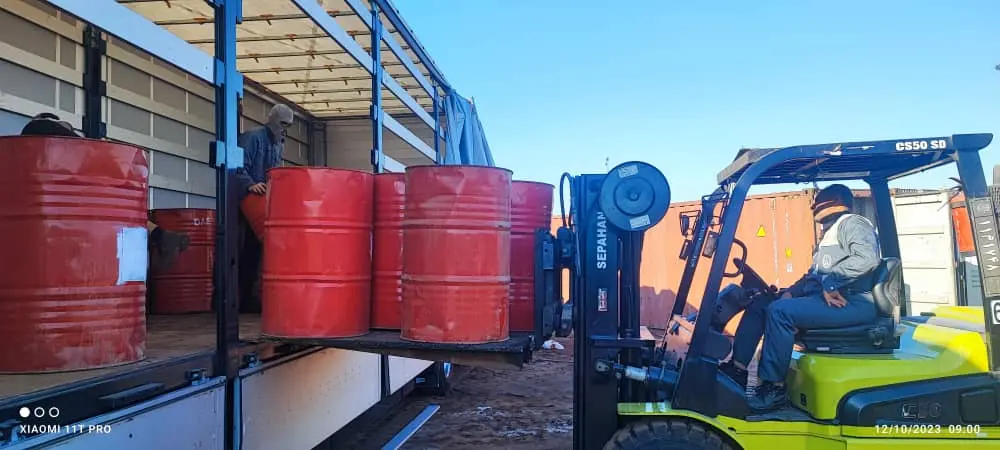 DEA- Aromatic Rubber Oil
DEA- Aromatic Rubber Oil
DISTILLATE AROMATIC EXTRACTS – DAE
Distillate Aromatic Extracts – DAE, is a product born from the sidelines of making lubricant base oils. Think of it as the unsung hero, a by-product from the process of extracting goodness from raw materials for lubricants. DAE comes in various grades – DAE 10, DAE 11, DAE 20, DAE 40, DAE 50, and DAE 60. Now, let’s dive into the technical jargon. Aromatic extracts are like the secret sauce in the refining of lubricating oils and waxes. These extracts, whether from distillates or residues, are thick, complex liquids loaded with aromatic hydrocarbons from C15 to C50. DAE and its cousin, RAE (Residual Aromatic Extracts), have fascinating lives. They become part of heavy fuels, play a role in creating carbon black, and contribute to the birth of rubber, plastics, petroleum pitches, and resins. However, every superhero has its challenges. Aromatic extracts have a tendency to stick together rather than spread out if they find themselves in the great outdoors. Some can cause a bit of trouble for aquatic life. So, the Testing Group has been hard at work, gathering all the health and ecological data to keep everyone informed. In a nutshell, DAE is the behind-the-scenes player that goes from making oils to fueling heavy industries and crafting materials we use every day.
USAGE OF DAE
distillate aromatic extract (dae) use in processing of rubber for the manufacturing of automobile tyres ,tubes and many , carbon black manufacturing other molded rubber goods. Treated Distillate Aromatic Extract Oil is used by LANXESS as an ingredient (softener/plasticizer) or processing aid in the production of natural and synthetic rubber products. The chemical compound is also used as an ingredient in certain engine, gear and lubricating oils.
OTHER USES:
- Carrier oils.
- Plasticizer.
- Diluents & filling agent.
- Good Solubility Properties.
- processing ability of rubber in milling and mixing.
- Heavy fuels.
- Feed stock for production of carbon black.
- Petroleum pitches and resins.
DEMYSTIFYING DAE’S
Let’s break down Distillate Aromatic Extracts – DAE– there are three of them in the distillate aromatic extracts family. Think of them as hydrocarbon cocktails, complex mixes that emerge as extras during the refining dance with crude oil. Now, these DAEs aren’t just passive spectators; they’re the backstage crew that can be blended to whip up other petroleum concoctions. But, and there’s always a but, these substances are au naturel, meaning they come with a hefty dose of aromatics, including some polycyclic aromatic hydrocarbons (PAHs). It’s like the wild side of the petroleum refining world.
MULTIFACETED APPLICATIONS OF DAE
DAE, the distillated aromatic extract blend, is a versatile player in various industrial arenas.
HERE’S A GLIMPSE OF ITS STARRING ROLES:
- Carrier Oils: DAE steps in as a trusty carrier oil, ensuring smooth blending in various formulations.
- Plasticizer: In the world of plastics, DAE plays the role of a plasticizer, enhancing flexibility and performance.
- Diluents & Filling Agent: DAE knows how to fill the gaps, serving as a diluent and filling agent in diverse applications.
- Solubility Maestro: With impressive solubility properties, DAE makes itself at home in formulations requiring seamless blending.
- Rubber Processing Prodigy: When it comes to rubber processing, DAE takes the stage, facilitating milling and mixing with finesse.
- Heavy Fuels Support: DAE lends its weight to heavy fuels, ensuring efficient combustion.
- Carbon Black Alchemist: As a feedstock, DAE contributes to the creation of carbon black, a valuable material in various industries.
- Petroleum Pitch and Resin Maven: In the realm of petroleum pitches and resins, DAE proves its mettle, playing a crucial role in their production.
- Master of Rubber and Plastics: Last but not least, DAE is a key player in the manufacturing of rubber and plastics, bringing its unique properties to the mix.
In the grand industrial symphony, DAE takes on multiple instruments, creating harmonies across diverse applications.
PROPERTIES OF DAE
- Good abrasion resistance
- Good low temperature flexibility
- Low amounts of waste tires in the process
- Good resistance to reversion
- Save fuel and energy consumption
- Extended tires life time
- Low environmental impact
RELATIONSHIP BETWEEN DAE AND RPO
DAE as an RPO: DAE is a specific type of aromatic RPO. It falls under the category of aromatic oils used in the rubber industry. So, while all DAEs can be considered RPOs, not all RPOs are DAEs. RPOs also include other types of oils like naphthenic and paraffinic oils, which have different chemical compositions and properties.
DAE OIL: PACKAGED FOR CONVENIENCE
Ensuring the convenience of handling and transporting DAE10, DAE20, DAE40, DAE50, and DAE60 is a priority. These variants come meticulously packed in new steel drums, each with a generous capacity of 200-210 liters. For those drums that have been given a new lease on life through reconditioning, worry not—the quantity per drum remains the same. Picture this: a total of 16,500 to 17,000 MT of different DAE grades neatly fitting into one 20-foot container, comprising 80 drums in total. The efficiency doesn’t stop there; the ISO tank, boasting a net weight of 20 MT, matches the capacity of flexi tanks for a seamless shipping experience. Whether in drums or tanks, DAE Oil is packaged with practicality in mind, ready to embark on its journey with ease.
TECHNICAL DATA SHEET OF DAE
Characteristic DAE 10 DAE 40 (MIN-MAX) DAE.S30 Test method
Kinematic viscosity @ 100 °C, cSt 10 30-60 20-30 ASTM: D-445
Flash Point, °C 215 365-300 Min 200 ASTM: D-92
Pour Point, °C +9 15-20 +15 ASTM: D-97
Specific Gravity @ 15, Kg/m³ 1000 995-1020 1000 ASTM: D-1298
Aniline point, °C 35 50-65 25 IP-2
For more Information or Placing order please contact our Sales Team.

